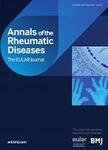版权所有:内蒙古大学图书馆 技术提供:维普资讯• 智图
内蒙古自治区呼和浩特市赛罕区大学西街235号 邮编: 010021

作者机构:Leiden University Medical Center Department of Biomedical Data Sciences Leiden Netherlands Leiden University Medical Center Department of Rheumatology Leiden Netherlands Delft University of Technology Department of Intelligent Systems Pattern Recognition and Bioinformatics Delft Netherlands Reumazorg Zuid West Neder anmd Goes Netherlands Maastricht University Medical Center Department of Internal Medicine Division of Rheumatology Maastricht Netherlands Maastricht University Care and Public Health Research Institute (CAPHRI) Maastricht Netherlands Haga Hospital Department of Rheumatology Den Haag Netherlands Delft Technical University Delft Bioinformatics Lab Delft Netherlands Leiden University Medical Center Leiden Computational Biology Department of Biomedical Data Sciences Leiden Netherlands Delft University of Technology The Delft Bioinformatics Lab Pattern Recognition and Bioinformatics Delft Netherlands ReumaNederland Amsterdam Netherlands (Solna) Karolinska Institutet Division for Rheumatology Department of Medicine Stockholm Sweden Elsa Science Stockholm Sweden University Medical Center Rotterdam Department of Public Health Erasmus MC Rotterdam Netherlands Medical Center Leeuwarden Department of Rheumatology Leeuwarden Netherlands Nij Smellinghe Hospital Department of Rheumatology Drachten Netherlands Leiden University Medical Center Department of Clinical Epidemiology Leiden Netherlands Newcastle University Translational and Clinical Research Institute Rheumatology Newcastle upon Tyne United Kingdom
出 版 物:《Annals of the Rheumatic Diseases》 (风湿病纪事)
年 卷 期:2024年第83卷第SUPPL 1期
页 面:1128页
学科分类:1002[医学-临床医学] 100201[医学-内科学(含:心血管病、血液病、呼吸系病、消化系病、内分泌与代谢病、肾病、风湿病、传染病)] 10[医学]
主 题:Telemedicine Real-world evidence Self-management Epidemiology Observational studies/registry
摘 要:Background:Online symptom checkers (OSCs) could provide guidance in the diagnostic process. The number of OSCs are expanding yet often lack rigorous validation. Rheumatic? is an online questionnaire designed to provide a fast and reliable risk assessment of possible rheumatic diagnoses for individuals with musculoskeletal complaints (MSCs).We set out to validate this tool by following individuals with MSCs. A key question is representativity of the participants as attrition bias can complicate the construction of a precise prediction ***:This project aims to assess aspects of attrition and selection bias in Rheumatic? by comparing participants who did and did not respond to the first follow-up survey, by comparing participants versus patients from general practitioners (GP) and rheumatology clinics, and by exploring variations in characteristics across different recruitment ***:Rheumatic? includes a baseline questionnaire about current symptoms and past diagnoses. Participants were recruited online, at primary care or at rheumatology outpatient clinics. Four surveys followed after 0, 3, 6 and 12 months, about source of recruitment, medication, further diagnoses etc. We considered data of July 2021 to July *** compared participants who solely answered the questionnaire to those who also answered the first follow up survey. Secondly, we compared characteristics of participants across different sources of recruitment (i.e. at primary or secondary care clinics or online (Instagram, Facebook, Google, the Dutch Arthritis Association)). For this, we calculated differences in percentages with confidence intervals and applied chi squared *** assessed representability of the cohort with the expected target population by comparing age, sex and BMI of the participants with information on new patients with MSC from the same period at primary care (GP), Rheumatology clinics in the South West of the Netherlands (RZWN), and the Rheumatology depart